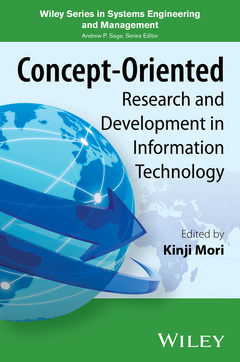Description
Concept-Oriented Research and Development in Information Technology
Wiley Series in Systems Engineering and Management Series
Coordinator: Mori Kinji
Language: English
Subject for Concept-Oriented Research and Development in Information...:
274 p. · 16.3x24.1 cm · Hardback
Description
/li>Contents
/li>Biography
/li>
KINJI MORI, PhD, is Professor in the Department of Green Computing Systems Research Organization at Waseda University, Japan and Professor Emeritus at the Tokyo Institute of Technology, Japan in the Department of Computer Science. Previously, Dr. Mori worked at Hitachi as Chief Researcher. He is a Fellow of IEEE and IEICE. Dr. Mori is the pioneer of the concept-oriented research and development, and he proposed the Autonomous Decentralized Systems Concept and realized its concept-oriented technologies and applications. He founded the IEEE International Symposium on Autonomous Decentralized Systems. Dr. Mori holds more than 350 patents and has received the Special Distinguished Ichimura Award, the Japan Patent Award, and the Research Achievement Award in Japan, among others.

